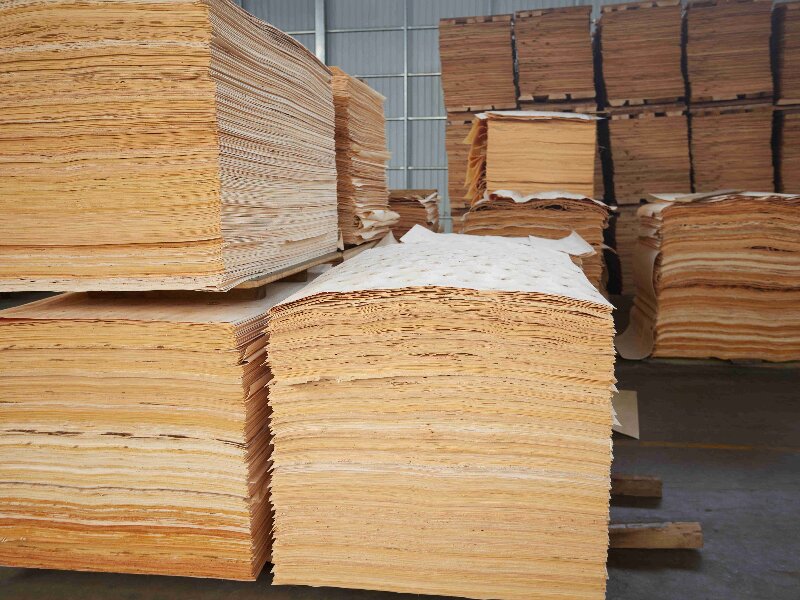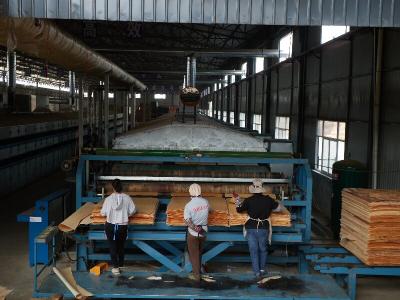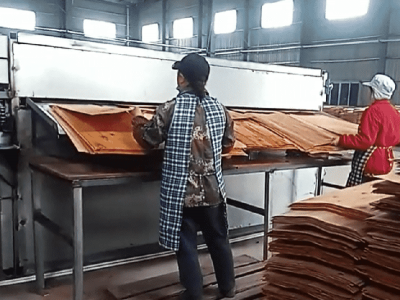The Wood Veneer Industry Navigates a New Era
The Wood Veneer Industry Navigates a New Era: Sustainability, Innovation, and Supply Chain Resilience
FOR IMMEDIATE RELEASE
Global, August 26, 2025– The global veneer industry, a critical and elegant segment of the broader forest products sector, is in a period of significant transformation. Long revered for its ability to maximize the aesthetic potential of precious timber, wood veneer is confronting a complex mix of challenges and opportunities shaped by environmental concerns, technological advancement, and shifting consumer demands. The industry is moving beyond its traditional roots to redefine luxury, sustainability, and efficiency for the modern era.
The Enduring Allure of Wood Veneer
At its core, wood veneer consists of thin slices of wood, typically less than 3 mm thick, glued onto core panels like particleboard, MDF, or plywood to create surfaces for doors, panels, furniture, and flooring. Its primary advantage has always been resource efficiency: a single log can produce a vast surface area of veneer, allowing for the economical use of rare, figured, and exotic woods that would be prohibitively expensive or structurally impractical as solid lumber. This makes the wood veneer product inherently sustainable by default, maximizing the yield and value of each harvested tree.
Current Market Dynamics and Pressures
The veneer industry is not operating in a vacuum. It is acutely sensitive to global economic currents. The post-pandemic recovery saw a massive boom in construction and home renovation, driving demand for furniture and interior finishes. However, rising inflation, geopolitical instability, and cooling housing markets in key regions like North America and Europe are now creating headwinds, leading to more cautious ordering and inventory management among manufacturers.
Furthermore, the industry continues to grapple with volatile logistics and supply chain costs. The availability of raw logs, particularly high-quality exotic species, is hampered by stricter international regulations like the U.S. Lacey Act and the EU Timber Regulation, designed to combat illegal logging. While crucial for environmental protection, these regulations have increased the administrative burden and necessitated unparalleled levels of traceability, from the forest to the finished product.
Sustainability: From Buzzword to Business Imperative
Perhaps the most powerful force reshaping the veneer industry is the intensified global focus on environmental, social, and governance (ESG) principles. Consumers and corporate clients are increasingly demanding proof of sustainable sourcing. This has propelled certification schemes like the Forest Stewardship Council (FSC) and the Programme for the Endorsement of Forest Certification (PEFC) from a niche preference to a mainstream market requirement.
"Today, sustainability is our primary driver of innovation," says Elena Petrova, a sustainability officer at a major European veneer producer. "It's no longer just about selling a beautiful sheet of wood veneer; it's about selling a story of conservation, responsible management, and carbon sequestration. Clients want to know that the wood in their boardroom table comes from a forest that is managed for biodiversity and community benefit."
This shift is also fueling interest in underutilized species and plantation-grown woods, reducing pressure on old-growth forests. The industry is getting creative, promoting the unique beauty of local, fast-growing, or even invasive species as a mark of ecological responsibility.
Technological Innovation: Precision and Possibility
Technology is providing the tools to navigate these new demands. The modern veneer industry is increasingly automated and digital.
Slicing and Drying: Advanced CNC slicing machines offer incredible precision, allowing for thinner cuts that maximize log yield. Computer-controlled dryers ensure perfect moisture content, reducing waste and improving product stability.
Sorting and Matching: Optical scanning and AI-powered sorting systems can automatically grade veneer sheets for color and grain pattern, dramatically increasing efficiency and consistency. These systems can then digitally match sequences for bookmatching, slip matching, and other architectural patterns with speed and accuracy impossible by the human eye alone.
Digital Inventory and E-Commerce: Major players are developing vast digital libraries of their wood veneer offerings. Architects and designers can now browse, select, and even visualize specific veneer cuts in a digital model of their project before a single sheet is physically shipped, streamlining the specification process.
The Competitive Landscape: Consolidation and Niche Specialization
The market is characterized by a dual trend. On one hand, there is consolidation, with larger multinational companies acquiring smaller mills to gain access to broader raw material sources, distribution networks, and technological capital. These entities compete on a global scale, supplying massive volumes to furniture manufacturers and construction projects.
On the other hand, there is a thriving segment of small, artisanal producers who compete on uniqueness, craftsmanship, and ultra-niche specialization. These boutiques cater to high-end interior designers, luxury automotive brands, and yacht interiors, offering rare burls, expertly matched sequences, and custom dyeing and processing that large factories cannot replicate.
Looking Ahead: The Future Grain of the Veneer Industry
The path forward for the veneer industry is one of balanced adaptation. The key to future success lies in:
Transparent and Agile Supply Chains: Building resilient and fully transparent supply chains that can withstand geopolitical and climate-related disruptions is paramount.
Embracing the Circular Economy: Innovating with recycled content substrates and developing end-of-life solutions for veneered products will become increasingly important.
Continuous Technological Investment: Further integration of AI, IoT in manufacturing and digital sales tools will be essential for maintaining a competitive edge.
Education and Marketing: The industry must continue to educate architects, designers, and consumers on the inherent sustainable benefits and design versatility of wood veneer, distinguishing it from laminates and solid wood.
In conclusion, the global veneer industry is at a crossroads. While facing economic uncertainty and increased regulatory scrutiny, it is also powerfully positioned to answer the call for sustainable and beautiful materials. By leveraging technology, championing transparency, and continuing to showcase the unique natural beauty of wood, the industry is carefully slicing a path toward a resilient and prosperous future.
About the Wood Veneer Industry:
The veneer industry is a multi-billion-dollar global sector dedicated to the production of thin slices of wood for surface applications in furniture, cabinetry, architectural millwork, and flooring. It is an essential part of the value-added wood products market, promoting efficient and sustainable use of forest resources.






